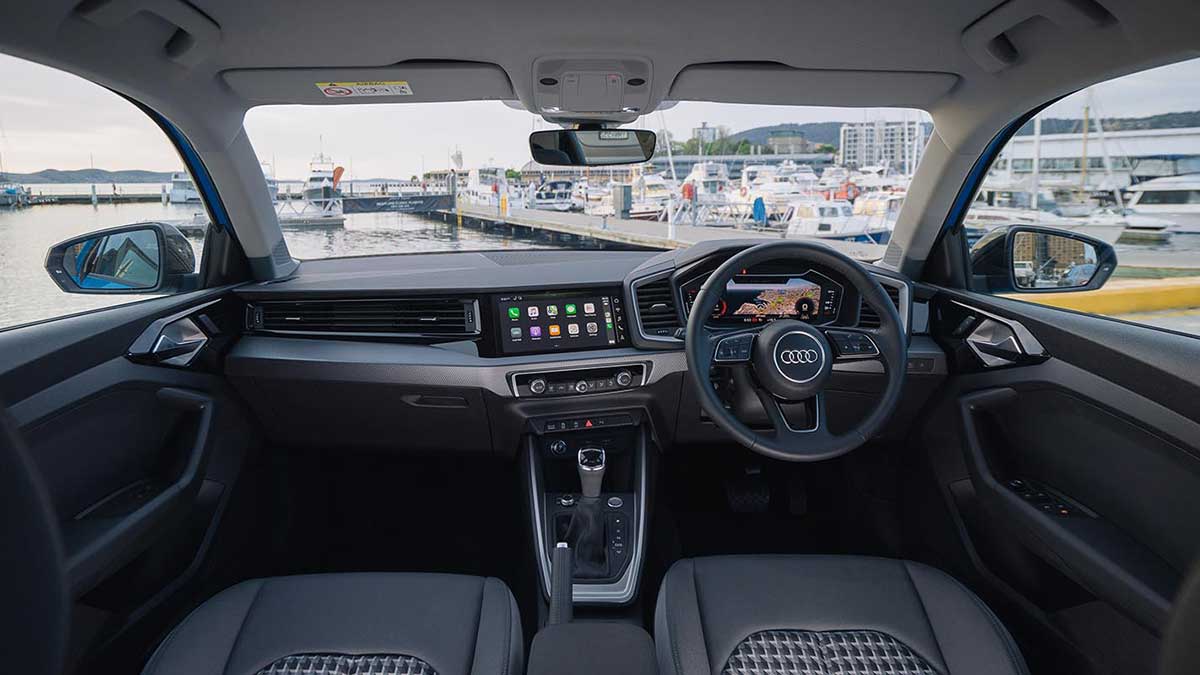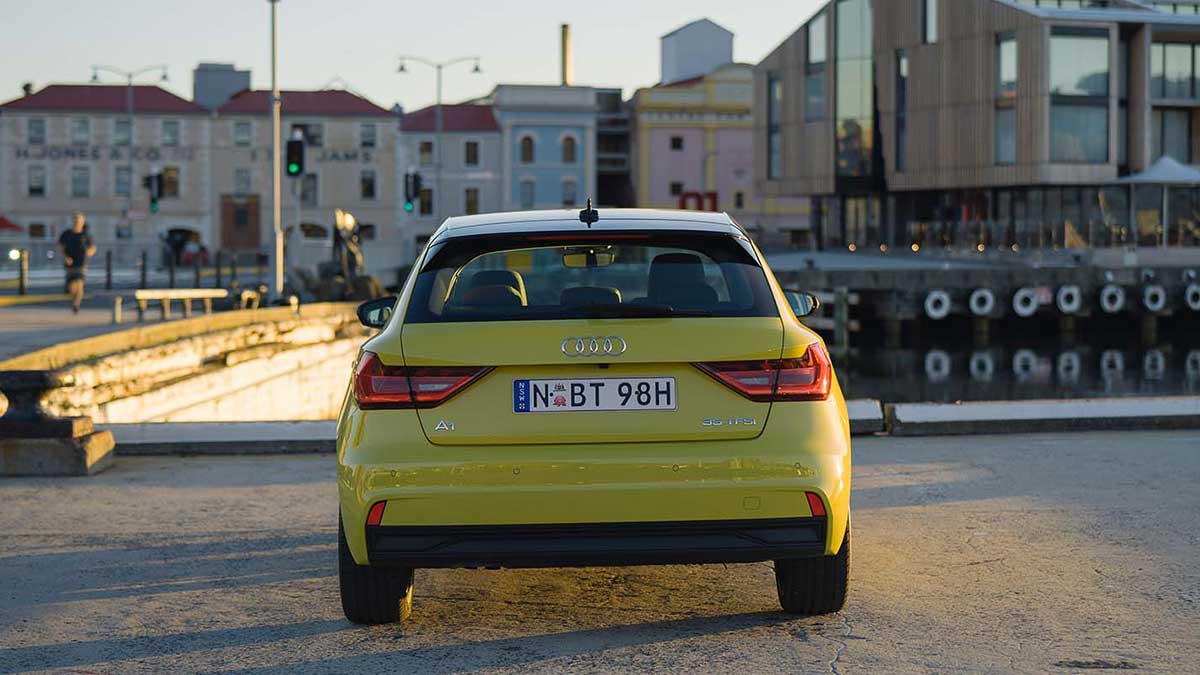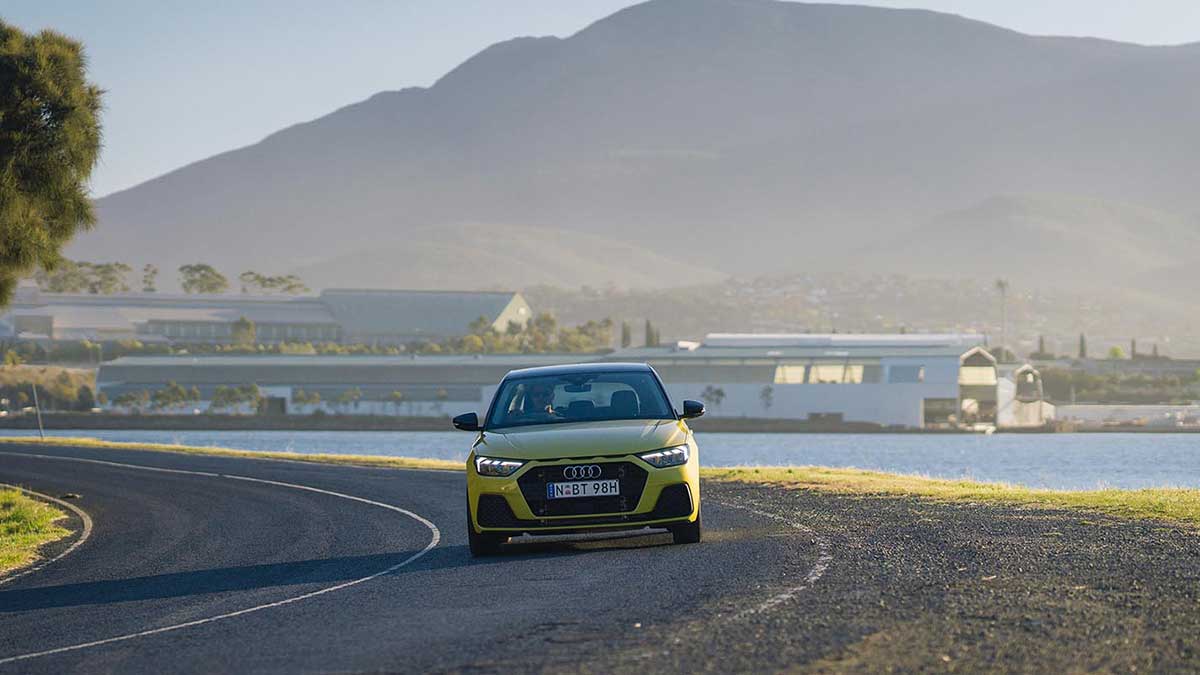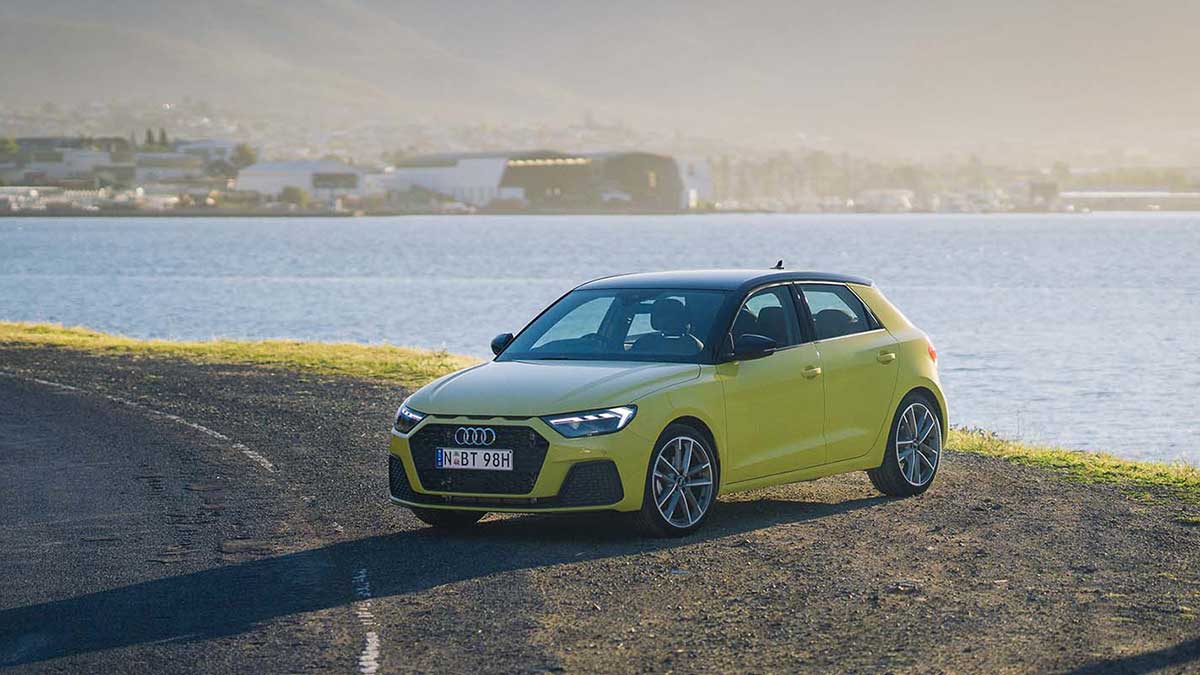Audi A1 35 TFSI 2020 road test review

Audi’s updated fun machine is a peppy drive at a pretty price.
Back in 2010, Audi carved out a niche as one of very few premium brands to offer a sub-compact hatchback, and in so doing proved that size doesn’t matter when it comes to a high-end European badge.
The original A1 shared its platform with the fifth-generation VW Polo. Audi was criticised by some for pricing the A1 well above the more affordable Polo, even though they were largely the same under the skin, but it didn’t seem to hamper sales. The A1 Sportback was a huge success, with hundreds of thousands finding homes around the world.
Nine years later Audi has finally lobbed a new-generation version. It still shares its underpinnings with the VW Polo, but this time it’s the excellent sixth-generation version.
Thumbs up
Exclusivity, impressive ride comfort, torquey twin-turbo diesel engine, sharp steering, well equipped.
Thumbs down
Could have more Alpina touches to differentiate it further from BMW donor car, expensive options.
Audi has simplified the A1 range to just three model grades, each with different turbo-petrol powerplants. Pricing kicks off at $32,350 before on-road costs for the entry-level A1 30 TFSI, increasing to $35,290 for the 35 TFSI tested here, and topping out at $46,450 for the 40 TFSI S line. Sadly for hot hatch fans, the potent S1 hatch will not be offered in second-generation guise due to the cost of engineering quattro all-wheel drive for this chassis.
The A1 is unique – Audi’s arch-rivals BMW and Mercedes-Benz don’t offer a direct alternative. It does, however, line up closely with the Mini five-door hatch ($31,500-$41,950). A trio of French offerings – the Citroen C3, Peugeot 208 and Renault Clio could also be considered rivals.
Now that it’s based on Volkswagen Group’s ubiquitous MQB platform, the A1 has grown in most dimensions over the original. It’s 56 millimetres longer and has a 94-millimetre-longer wheelbase which has liberated more cabin space. Boot space has also expanded by 65 litres to 335 litres, which is more than the one-size-larger Mazda3 hatch. There is, however, no spare wheel – just a tyre puncture repair kit under the boot floor.
The A1 looks like a small car, but there’s lots of useable space inside, particularly in the rear seat. There’s plenty of head room in the second row and decent toe room, although knee room is a little tight. The rear seating row misses out on air vents, map pockets and a central arm rest, but it has 60/40 split-fold backrests.
The edgy exterior styling flows through to the interior, with interesting angles and shapes used for the dash and doors. The cabin doesn’t feel particularly premium – some hard plastics don’t help – but it is modern. It has an excellent seating position and a lovely little three-spoke leather steering wheel. Many dash elements, including the 8.8-inch haptic touchscreen, are angled towards the driver for easier access. Audi’s latest infotainment system is a cinch to navigate thanks to a simple menu layout.
The front seats are a little flat, and they are firm yet comfortable. They have a lovely cloth trim in the 35 TFSI too. Leather seats are only offered as part of an options package in the 40 TFSI.

Ariel view of Audi A1 35 TFSI 2020.
The only extras in our test car were a $2990 Style package that added LED headlights, an LED interior lighting package, heated and automatically folding exterior mirrors and 18-inch Audi Sport wheels, plus an $890 contrasting black roof. This brought the price to $40,160, which is not unreasonable.
Powering the base A1 30 TFSI is an 85kW/200Nm 1.0-litre three-cylinder engine, while the top-spec 40 TFSI S line uses a 147kW/320Nm 2.0-litre turbo-petrol unit. The mid-range 35 TFSI we drove has a 110kW/250Nm 1.5-litre turbo-petrol engine. All are front-wheel drive and use a seven-speed dual-clutch automatic, except the 40 TFSI which has a six-speed box.
The A1 has a compact turning circle of 10.5 metres, and is perfect for ducking in and out of tight parking spaces. Aside from a very thick C-pillar, front and rear visibility are good.
From a standing start the A1 has brisk acceleration – Audi says it can dash from 0-100kmh in 7.7 seconds – but the dual-clutch transmission can be a little jolty changing up from lower gears under heavy throttle. A more measured approach to the accelerator elicits linear performance from the perky engine. Switching Audi’s Drive Mode Select to Sport mode increases the throttle response and ups the fun factor.
The steering is lightly weighted, which is typical of Audi, and that’s not a criticism. The A1’s sharp point-and-shoot steering feels connected to the road and is perfect for a car like this.
Out on the open road, the A1 is an absolute hoot to drive. At 1165 kilograms it is light and nimble, and loves being chucked into a bend. The suspension set-up – McPherson struts up front and compound link rear – is tuned for dynamic driving, ensuring the A1 shines on undulating, twisty roads. The suspension damping and the 18-inch wheels with low-profile tyres let the ride down.
You never feel like the A1 is lacking for not having quattro AWD. The stability control is well calibrated, and while there was some skipping on unsealed road shoulders navigating tight bends, the A1 safely maintained its composure.
The cabin isn’t that well insulated from road and tyre noise. It’s more noticeable at higher speeds and on coarser road surfaces, and becomes grating after a while.
Of Audi’s safety suite, the lane-keeping aid is pretty spot on. It kept the car centred without the aggressive intervention of some other systems.
Audi says the A1 35 TFSI consumes 5.8 litres of fuel per 100 kilometres on the combined cycle, but we recorded 7.4L/100km.
The verdict
The second-generation Audi A1 is a huge improvement. It combines grin-worthy driving dynamics with a peppy engine, but it has a noisy cabin. Edgy styling will appeal to many.
|
Price |
List price: $35,290 before on-road costs. Price as tested: $40,160 before on-road costs. Model range: $32,350-$46,450 before on-road costs. |
|---|---|
|
Drivetrain |
1.4-litre four-cylinder turbocharged engine, seven-speed dual-clutch automatic transmission, front-wheel drive. Power: 110kW@5000-6000rpm. Torque: 250Nm@1500-3500rpm. Wheels: 215/40 R18. |
|
Fuel |
95 RON petrol, 40-litre fuel tank. Consumption: 7.4L/100km (RACV test), 5.8L/100km (government test). Emissions: 132g/km CO2. |
|
Safety |
Five-star ANCAP crash safety rating, autonomous emergency braking with pedestrian and cyclist detection, driver-attention alert, six airbags, tyre-pressure monitor, lane-departure warning and lane-keeping aid. |
|
Features |
Keyless entry and start, auto-dimming rear-view mirror, leather steering wheel, interior lighting package, 8.8-inch colour display, digital radio, Apple CarPlay/Android Auto, 10.25-inch digital instrument cluster. |
|
Warranty |
Three-year/unlimited-kilometre warranty. Service intervals every 12 months or 15,000 kilometres. Three or five-year service plans. |



